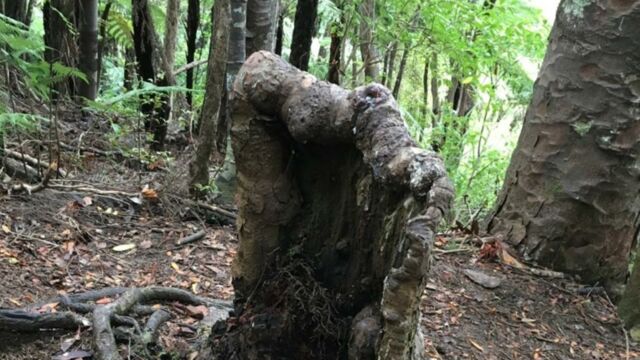A strange organism is keeping this ‘zombie tree’ in New Zealand alive

In a forest in New Zealand, a researcher discovered a tree stump that appeared to be dead, but was actually still alive. Its roots are believed to be part of a large organism that connects it to other trees, allowing it to feed like a vampire through its fellow organisms.
If your next holiday is planned for New Zealand, it is very likely that the landscape you'll see will be covered with large, broad conifers calledkauri. This variety of tree is known for its impressive longevity, which can be up to 2,000 years. It was while observing the stump of one of these specimens that researcher Sebastien Leuzinger made a surprising discovery: although devoid of branches and leaves, this tree's stump continues to live and feed.
Discover our latest podcast
A 'superorganism' living under the forest
Deprived of the traditional means of feeding itself like any normalliving tree, the 'vampire tree' actually benefits from an organism connecting its roots to those of surrounding trees, allowing it to collect the water and nutrients it needs. This organism also connects a large number of trees in the forest.
More under this adMore under this adThis astonishing way of functioning could question our perception of trees, as Sebastien Leuzinger said:
Possibly we are not really dealing with trees as individuals, but with the forest as a superorganism.
Supportive and organised trees
One may wonder how a tree can feed its neighbour without being impacted by this relationship. The answer is both simple and surprising: they all have their own time slot. During the day, most trees absorb water and nutrients into themselves; at night, the trees 'sleep' and let their 'undead' fellow trees feed in turn through this living network.
More under this adMore under this adBut let's investigate further and ask ourselves: are these trees really in solidarity with each other, or is this a form of parasitism? It is still difficult to speak clearly about solidarity, but this 'generosity' between plants can be explained. First of all, this organism most likely developed a long time ago, at a time when theapparently dead tree had to live on its own with its own branches and leaves. It's possible that the other trees did not notice the difference: the tree is after all still alive, even if in our eyes it is only a stump.
Climate, disease: blessing or curse?
Clearly, this forest organism is a masterpiece of nature, allowing our leafy friends to live together while being able to rely on each other. This mutually beneficial relationship could enable the forest to protect itself from droughts, by promoting the supply of water from better-situated trees to those further away from water points.
More under this adMore under this adThis is an effective means of protection, given the more frequent droughts which are due to occur because of global warming. But beware, not everything is rosy either: if this organism is able to pass on food, it can also pass on diseases, such as 'kauri dieback,' an incurable disease caused by a pseudo fungus that travels through mud, and is then transmitted from tree to tree.